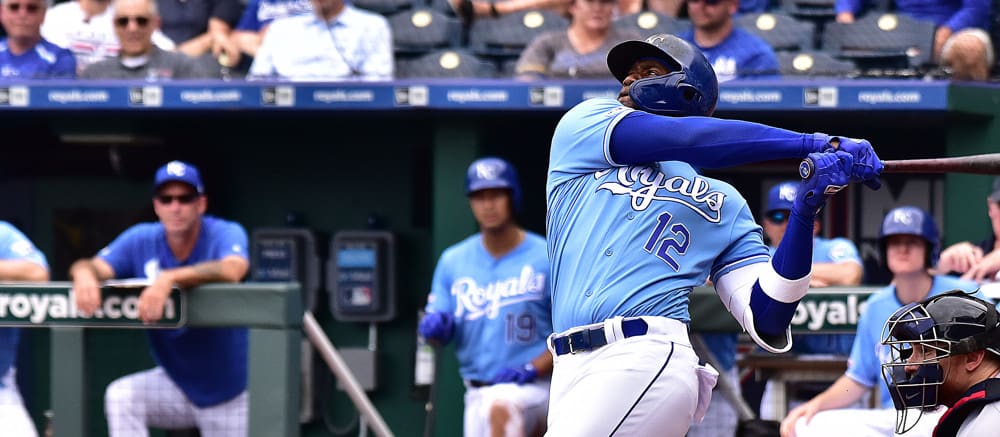This article is part of our MLB Barometer series.
The 2019 MLB season has come to a close, and with it comes the end of my first season at the helm of the MLB Barometer. Thanks to all of you for reading and especially for commenting — most of the fun of this job comes from interacting with the community, as it's a lot more enjoyable to write for actual people than it is to write for the void.
I'll be shaking up the format a bit for this special season wrap-up version of the column. Rather than looking at just 10 risers and fallers, I'll go round-by-round (and later by groups of rounds) to look at which player rose and fell the most compared to their draft position. I'll use each player's preseason NFBC ADP and compare it to his final ranking according to our earned auction values, using a 15-team roto league with the standard 10 categories and 70 percent of the budget spent on hitters. When the biggest faller was injured for most of the season, I'll make a note of that but will discuss the next biggest faller instead, as it's not all that insightful to say that a player who misses most of the season didn't provide much value.
If you managed to snag each of these risers, feel free to brag in the comments. If you wound up with all of these fallers, feel free to brag about that as well.
ROUND 1
Riser:  Ronald Acuna, OF, Braves: It's hard to
Ronald Acuna, OF, Braves: It's hard to
The 2019 MLB season has come to a close, and with it comes the end of my first season at the helm of the MLB Barometer. Thanks to all of you for reading and especially for commenting — most of the fun of this job comes from interacting with the community, as it's a lot more enjoyable to write for actual people than it is to write for the void.
I'll be shaking up the format a bit for this special season wrap-up version of the column. Rather than looking at just 10 risers and fallers, I'll go round-by-round (and later by groups of rounds) to look at which player rose and fell the most compared to their draft position. I'll use each player's preseason NFBC ADP and compare it to his final ranking according to our earned auction values, using a 15-team roto league with the standard 10 categories and 70 percent of the budget spent on hitters. When the biggest faller was injured for most of the season, I'll make a note of that but will discuss the next biggest faller instead, as it's not all that insightful to say that a player who misses most of the season didn't provide much value.
If you managed to snag each of these risers, feel free to brag in the comments. If you wound up with all of these fallers, feel free to brag about that as well.
ROUND 1
Riser:  Ronald Acuna, OF, Braves: It's hard to be a riser when you're already picked in the top 15 — only Acuna, Christian Yelich and Alex Bregman managed to do so. Acuna was taken as the eighth player off the board during draft season but finished as the highest earner overall. While his wRC+ did take a step back form 143 to 126, he came very close to a 40-40 season. Coming to the plate 715 times and scoring 127 runs certainly didn't hurt, either. Oh, and he's still just 21. Acuna will certainly be a popular pick for first overall this offseason, which would seem to be deserved given that he apparently should have been the first pick this year.
Ronald Acuna, OF, Braves: It's hard to be a riser when you're already picked in the top 15 — only Acuna, Christian Yelich and Alex Bregman managed to do so. Acuna was taken as the eighth player off the board during draft season but finished as the highest earner overall. While his wRC+ did take a step back form 143 to 126, he came very close to a 40-40 season. Coming to the plate 715 times and scoring 127 runs certainly didn't hurt, either. Oh, and he's still just 21. Acuna will certainly be a popular pick for first overall this offseason, which would seem to be deserved given that he apparently should have been the first pick this year.
Faller:  Chris Sale, SP, Red Sox: Sale and Jose Ramirez each looked like busts to start the season, but Ramirez at least somewhat salvaged his campaign with a strong second half. To be fair to Sale, his underlying numbers suggest that he did largely straighten things out after an awful start, but most fantasy owners couldn't take advantage of his 2.94 xFIP and were stuck with his 4.40 ERA instead. He wound up finishing 172 spots below his ADP rank of 12. Sale's inflated ERA and the elbow injury that cut his season short in mid-August will make him a very risky pick this offseason, though his 35.6 percent strikeout rate suggests that his ceiling remains high.
Chris Sale, SP, Red Sox: Sale and Jose Ramirez each looked like busts to start the season, but Ramirez at least somewhat salvaged his campaign with a strong second half. To be fair to Sale, his underlying numbers suggest that he did largely straighten things out after an awful start, but most fantasy owners couldn't take advantage of his 2.94 xFIP and were stuck with his 4.40 ERA instead. He wound up finishing 172 spots below his ADP rank of 12. Sale's inflated ERA and the elbow injury that cut his season short in mid-August will make him a very risky pick this offseason, though his 35.6 percent strikeout rate suggests that his ceiling remains high.
ROUND 2
Riser: 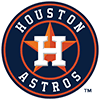 Justin Verlander and Gerrit Cole, SP, Astros: Verlander might be 36, but he's clearly still got it. He was taken 21st overall, which could be considered quite high given the injury risk that comes with his age and with pitching in general, but he'll finish the year as the highest-earning pitcher and the second-highest earner overall. His 2.58 ERA is a near match for last season's 2.52 mark, and he added 21 wins, the second most of his career. His 35.4 percent strikeout rate is fifth all-time among qualified starters. Verlander will turn 37 in February, so there's certainly a risk that 2020 will be the year he finally breaks, but he's thrown at least 200 innings in 12 of the last 13 seasons and certainly hasn't shown signs of slowing.
Justin Verlander and Gerrit Cole, SP, Astros: Verlander might be 36, but he's clearly still got it. He was taken 21st overall, which could be considered quite high given the injury risk that comes with his age and with pitching in general, but he'll finish the year as the highest-earning pitcher and the second-highest earner overall. His 2.58 ERA is a near match for last season's 2.52 mark, and he added 21 wins, the second most of his career. His 35.4 percent strikeout rate is fifth all-time among qualified starters. Verlander will turn 37 in February, so there's certainly a risk that 2020 will be the year he finally breaks, but he's thrown at least 200 innings in 12 of the last 13 seasons and certainly hasn't shown signs of slowing.
Teammate Gerrit Cole also finished 19 spots above his ADP rank, coming in fifth overall after being drafted 24th. He struck out 39.9 percent of batters, the highest strikeout rate of all-time among qualified starters, and also reached 20 wins for the first time in his career. He'll certainly have a case to be taken as the top pitcher off the board next season and would probably be my pick for that spot, given his absurd strikeout numbers and relative youth (29) compared to Verlander and Max Scherzer. Where he signs in free agency could affect his value, though, as the Astros certainly seemed to have helped with his development and also his win total.
Faller:  Blake Snell, SP, Rays: The second round had some major injury landmines, with Giancarlo Stanton and Corey Kluber each missing most of the season. Snell battled injuries of his own, breaking his toe in his own bathroom and later missing a relatively short period due to arthroscopic elbow surgery, but he made 23 starts, enough to make him eligible for this list. His ERA shot from 1.89 last year to 4.29 this season, leading to him falling 289 spots compared to his ADP rank of 28. His xFIP didn't rise much at all (from 3.16 to 3.31), and his strikeout rate increased slightly from 31.6 percent to 33.3 percent, so he may end up being just fine next season. Andrew Benintendi also deserves a mention in this category, as he never hit the injured list yet still fell 143 spots after posting thoroughly mediocre numbers.
Blake Snell, SP, Rays: The second round had some major injury landmines, with Giancarlo Stanton and Corey Kluber each missing most of the season. Snell battled injuries of his own, breaking his toe in his own bathroom and later missing a relatively short period due to arthroscopic elbow surgery, but he made 23 starts, enough to make him eligible for this list. His ERA shot from 1.89 last year to 4.29 this season, leading to him falling 289 spots compared to his ADP rank of 28. His xFIP didn't rise much at all (from 3.16 to 3.31), and his strikeout rate increased slightly from 31.6 percent to 33.3 percent, so he may end up being just fine next season. Andrew Benintendi also deserves a mention in this category, as he never hit the injured list yet still fell 143 spots after posting thoroughly mediocre numbers.
ROUND 3
Riser: 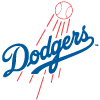 Cody Bellinger, 1B/OF, Dodgers: The third round contained several gems, as Bellinger, Anthony Rendon, Xander Bogaerts and Juan Soto finished as first-round values. Bellinger was the best of the bunch, finishing third on the earned auction value table. While he couldn't keep up his absurd .431 batting average from March and April, those hits did all count. He made the jump from being a good power hitter to an elite one, hitting 47 homers. He also cut his strikeout rate from 23.9 percent to 16.4 percent, further suggesting that he really has made legitimate improvements, something that isn't hard to believe for a 24-year-old with his kind of talent. Bellinger should be picked early in the first round this offseason.
Cody Bellinger, 1B/OF, Dodgers: The third round contained several gems, as Bellinger, Anthony Rendon, Xander Bogaerts and Juan Soto finished as first-round values. Bellinger was the best of the bunch, finishing third on the earned auction value table. While he couldn't keep up his absurd .431 batting average from March and April, those hits did all count. He made the jump from being a good power hitter to an elite one, hitting 47 homers. He also cut his strikeout rate from 23.9 percent to 16.4 percent, further suggesting that he really has made legitimate improvements, something that isn't hard to believe for a 24-year-old with his kind of talent. Bellinger should be picked early in the first round this offseason.
Faller: 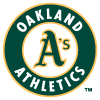 Khris Davis, DH, Athletics: Carlos Carrasco technically fell the most among players taken in round three, but he missed much of the year while battling leukemia. Davis edges out Noah Syndergaard as the biggest disappointment among players who didn't miss much time, falling by more than 200 spots. His batting average sunk from the traditional .247 to just .220, but his loss of power was considerably more significant, as he hit just 23 homers after hitting at least 42 in each of the last three seasons. An early May hip injury seemed to really set him back, as he posted just a .616 OPS since returning from the injured list at the start of June, though his .810 OPS he recorded through the end of May would still have been his lowest since 2014. Davis will turn 32 in December, further adding to his risk for next season.
Khris Davis, DH, Athletics: Carlos Carrasco technically fell the most among players taken in round three, but he missed much of the year while battling leukemia. Davis edges out Noah Syndergaard as the biggest disappointment among players who didn't miss much time, falling by more than 200 spots. His batting average sunk from the traditional .247 to just .220, but his loss of power was considerably more significant, as he hit just 23 homers after hitting at least 42 in each of the last three seasons. An early May hip injury seemed to really set him back, as he posted just a .616 OPS since returning from the injured list at the start of June, though his .810 OPS he recorded through the end of May would still have been his lowest since 2014. Davis will turn 32 in December, further adding to his risk for next season.
ROUND 4
Riser:  George Springer, OF, Astros: Ozzie Albies, Eugenio Suarez and Stephen Strasburg beat their ADP rank by at least 20 spots, but Springer was the best of the bunch, finishing 31 spots above where he was drafted. In his age-29 season, the outfielder recorded career highs in home runs (39), RBI (96) and all three parts of his .292/.383/.591 batting line. The fact that he beat his ADP by a significant margin despite injuries limiting him to just 122 games hints at an even higher ceiling for next season.
George Springer, OF, Astros: Ozzie Albies, Eugenio Suarez and Stephen Strasburg beat their ADP rank by at least 20 spots, but Springer was the best of the bunch, finishing 31 spots above where he was drafted. In his age-29 season, the outfielder recorded career highs in home runs (39), RBI (96) and all three parts of his .292/.383/.591 batting line. The fact that he beat his ADP by a significant margin despite injuries limiting him to just 122 games hints at an even higher ceiling for next season.
Faller: 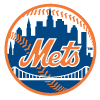 Edwin Diaz, RP, Mets: The fourth round contained its fair share of disappointments. Jameson Taillon provided the least value out of all players taken in the round, making just seven starts before requiring Tommy John surgery, while injuries also held Carlos Correa to just 75 games. Vladimir Guerrero Jr.'s rookie season was largely disappointing, but he can't compete with Diaz's struggles. The Mets' big offseason acquisition went from saving 57 games and recording a 1.96 ERA last season to saving 26 and posting a 5.59 ERA this year, providing the latest of many examples of why it's hard to trust a reliever. Diaz did still strike out 39.0 percent of batters, and his 3.07 xFIP suggests that he's in for significant positive regression, but he'll have to cut his homer problem if he's to be trusted in the ninth inning next season.
Edwin Diaz, RP, Mets: The fourth round contained its fair share of disappointments. Jameson Taillon provided the least value out of all players taken in the round, making just seven starts before requiring Tommy John surgery, while injuries also held Carlos Correa to just 75 games. Vladimir Guerrero Jr.'s rookie season was largely disappointing, but he can't compete with Diaz's struggles. The Mets' big offseason acquisition went from saving 57 games and recording a 1.96 ERA last season to saving 26 and posting a 5.59 ERA this year, providing the latest of many examples of why it's hard to trust a reliever. Diaz did still strike out 39.0 percent of batters, and his 3.07 xFIP suggests that he's in for significant positive regression, but he'll have to cut his homer problem if he's to be trusted in the ninth inning next season.
ROUND 5
Riser:  Zack Greinke, SP, Astros: Another win for veteran pitchers. Those who had faith in the 35-year-old Greinke in the middle of the fifth round were rewarded with value in line with that of an early third-rounder. His 23.1 percent strikeout rate isn't particularly exciting, but he finished ninth among qualified starters with a 2.93 ERA and tied for fourth with 18 wins. He should finish quite high in that category next season now that he's a member of an excellent Astros team, as his new teammates Justin Verlander and Gerrit Cole finished as the only two pitchers with 20 wins this season. Greinke did beat his FIP by 0.29 runs and his xFIP by 0.81 runs, but he's outperformed both numbers in six of the last seven seasons, so that's less of a worry than it might seem.
Zack Greinke, SP, Astros: Another win for veteran pitchers. Those who had faith in the 35-year-old Greinke in the middle of the fifth round were rewarded with value in line with that of an early third-rounder. His 23.1 percent strikeout rate isn't particularly exciting, but he finished ninth among qualified starters with a 2.93 ERA and tied for fourth with 18 wins. He should finish quite high in that category next season now that he's a member of an excellent Astros team, as his new teammates Justin Verlander and Gerrit Cole finished as the only two pitchers with 20 wins this season. Greinke did beat his FIP by 0.29 runs and his xFIP by 0.81 runs, but he's outperformed both numbers in six of the last seven seasons, so that's less of a worry than it might seem.
Faller:  Blake Treinen, RP, Athletics: If you left round five with only a moderately disappointing player, you did better than many of your peers. Luis Severino and Miguel Andujar each missed most of the season, while Joey Votto, Daniel Murphy and Matt Carpenter each fell far behind expectations. A reliever again takes the title as the most disappointing healthy player in the round, however, with Treinen finishing 338 spots below his ADP rank. He'll certainly be drafted much lower this season, if at all, as he lost his closer role to Liam Hendriks after posting a 4.91 ERA (more than six times as high as his 0.78 mark from 2018) and a pedestrian 22.2 percent strikeout rate.
Blake Treinen, RP, Athletics: If you left round five with only a moderately disappointing player, you did better than many of your peers. Luis Severino and Miguel Andujar each missed most of the season, while Joey Votto, Daniel Murphy and Matt Carpenter each fell far behind expectations. A reliever again takes the title as the most disappointing healthy player in the round, however, with Treinen finishing 338 spots below his ADP rank. He'll certainly be drafted much lower this season, if at all, as he lost his closer role to Liam Hendriks after posting a 4.91 ERA (more than six times as high as his 0.78 mark from 2018) and a pedestrian 22.2 percent strikeout rate.
ROUND 6-7
Riser: 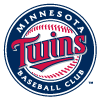 Nelson Cruz, DH, Twins: In another victory for the old guys, Cruz improved his rank by a full 70 spots despite playing just 120 games. The 39-year-old's .311 batting average was his best mark since 2010, and his 41 home runs marked the fourth time he's reached the 40-homer plateau. He did make a pair of trips to the injured list with left wrist issues, possibly giving some reason to worry for next season (in addition to his age), but he hit .351/.412/.611 in 33 games since returning from his latest absence, so he certainly didn't appear to be ailing down the stretch. Jonathan Villar, Jose Abreu and Josh Donaldson earn honorable mentions in these rounds.
Nelson Cruz, DH, Twins: In another victory for the old guys, Cruz improved his rank by a full 70 spots despite playing just 120 games. The 39-year-old's .311 batting average was his best mark since 2010, and his 41 home runs marked the fourth time he's reached the 40-homer plateau. He did make a pair of trips to the injured list with left wrist issues, possibly giving some reason to worry for next season (in addition to his age), but he hit .351/.412/.611 in 33 games since returning from his latest absence, so he certainly didn't appear to be ailing down the stretch. Jonathan Villar, Jose Abreu and Josh Donaldson earn honorable mentions in these rounds.
Faller: 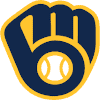 Travis Shaw, 2B/3B, Brewers: Those who took a chance on Craig Kimbrel in these rounds wound up unhappy, as did those who ended up with injured outfielders Mitch Haniger and Justin Upton. Shaw edges out Jose Peraza and Jesus Aguilar for the most disappointing performance among players whose poor returns were due more to ineptitude than injury, however. Shaw did spend some time on the injured list but spent more time in the minors, quite a surprise after he hit .241/.345/.480 with 32 homers last season. It's hard to say he deserved a big-league spot this year, though, as he stumbled to an awful .157/.279/.270 line in 85 games. Keston Hiura's emergence at second base blocks off one path to playing time even if Shaw fixes things over the offseason, though third base could be available if Mike Moustakas leaves in free agency.
Travis Shaw, 2B/3B, Brewers: Those who took a chance on Craig Kimbrel in these rounds wound up unhappy, as did those who ended up with injured outfielders Mitch Haniger and Justin Upton. Shaw edges out Jose Peraza and Jesus Aguilar for the most disappointing performance among players whose poor returns were due more to ineptitude than injury, however. Shaw did spend some time on the injured list but spent more time in the minors, quite a surprise after he hit .241/.345/.480 with 32 homers last season. It's hard to say he deserved a big-league spot this year, though, as he stumbled to an awful .157/.279/.270 line in 85 games. Keston Hiura's emergence at second base blocks off one path to playing time even if Shaw fixes things over the offseason, though third base could be available if Mike Moustakas leaves in free agency.
ROUND 8-10
Riser:  Rafael Devers, 3B, Red Sox: Devers' poor sophomore season, in which he hit just .240/.298/.433 with a modest 21 homers, saw him fall to the early 10th round in draft season. Those who took a chance on him ended up with quite the bargain, as he finished as the seventh-highest earner overall after hitting .311/.361/.555 with 32 homers. He finished second in the league with 129 runs and was one of just three players (along with Cody Bellinger and Anthony Rendon) to reach 115 runs and 115 RBI. While those stats can fluctuate year-to-year, hinting at some potential regression, the overall improvements that Devers made at age 22 appear to be quite real, setting him up to be a fantasy star for years to come.
Rafael Devers, 3B, Red Sox: Devers' poor sophomore season, in which he hit just .240/.298/.433 with a modest 21 homers, saw him fall to the early 10th round in draft season. Those who took a chance on him ended up with quite the bargain, as he finished as the seventh-highest earner overall after hitting .311/.361/.555 with 32 homers. He finished second in the league with 129 runs and was one of just three players (along with Cody Bellinger and Anthony Rendon) to reach 115 runs and 115 RBI. While those stats can fluctuate year-to-year, hinting at some potential regression, the overall improvements that Devers made at age 22 appear to be quite real, setting him up to be a fantasy star for years to come.
Faller: 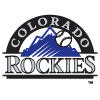 Wade Davis, RP, Rockies: Yet another reliever finishes as the biggest bust in his bracket — are we sensing a trend here? Davis was always going to be a risky buy, since he called Coors Field home, but getting a locked-in closer did seem to be a defensible decision in draft season. Closers who are locked into a job in March may not still be locked in come midseason, though, as Davis demonstrated by losing his job in early August. The veteran finished with just 15 saves as his ERA exploded to 8.65, and his strikeout and walk rates each took significant steps in the wrong direction, finishing at 20.4 percent and 14.1 percent respectively. Now 34, it would be a surprise to see Davis back in the closer conversation next season.
Wade Davis, RP, Rockies: Yet another reliever finishes as the biggest bust in his bracket — are we sensing a trend here? Davis was always going to be a risky buy, since he called Coors Field home, but getting a locked-in closer did seem to be a defensible decision in draft season. Closers who are locked into a job in March may not still be locked in come midseason, though, as Davis demonstrated by losing his job in early August. The veteran finished with just 15 saves as his ERA exploded to 8.65, and his strikeout and walk rates each took significant steps in the wrong direction, finishing at 20.4 percent and 14.1 percent respectively. Now 34, it would be a surprise to see Davis back in the closer conversation next season.
ROUND 11-15
Riser:  Pete Alonso, 1B, Mets: Alonso's ADP might have been higher if it was clear earlier in draft season that he'd be on the big-league roster from Opening Day. It will certainly be much higher this offseason after he finished as the 12th-highest earner in his rookie season, one spot behind Mike Trout. Alonso dominated big-league pitching from the start, finishing with a league-high 53 homers, which edged Aaron Judge for the rookie record. The 24-year-old paired that total with a modest .260 batting average, but the elite power should still be enough to vault him into the top tier of first basemen this winter.
Pete Alonso, 1B, Mets: Alonso's ADP might have been higher if it was clear earlier in draft season that he'd be on the big-league roster from Opening Day. It will certainly be much higher this offseason after he finished as the 12th-highest earner in his rookie season, one spot behind Mike Trout. Alonso dominated big-league pitching from the start, finishing with a league-high 53 homers, which edged Aaron Judge for the rookie record. The 24-year-old paired that total with a modest .260 batting average, but the elite power should still be enough to vault him into the top tier of first basemen this winter.
Faller:  Kyle Freeland, SP, Rockies: Fantasy owners were collectively suspicious of Freeland's 2.85 ERA from 2018, drafting him in the middle of the 11th round. It's hard to repeat that figure at Coors Field, and even harder if you strike out a below-average number of batters (20.5 percent) and keep the ball on the ground at a good but not elite rate (46.0 percent). It turns out that people weren't nearly suspicious enough, as he crashed so hard at the start of the season that he was sent to the minors at the end of May, quite the follow-up from a player who finished fourth in NL Cy Young voting the season before. The lefty ended the year with a 6.73 ERA and a 16.7 percent strikeout rate and will be hard to justify drafting in anything but the deepest leagues next season.
Kyle Freeland, SP, Rockies: Fantasy owners were collectively suspicious of Freeland's 2.85 ERA from 2018, drafting him in the middle of the 11th round. It's hard to repeat that figure at Coors Field, and even harder if you strike out a below-average number of batters (20.5 percent) and keep the ball on the ground at a good but not elite rate (46.0 percent). It turns out that people weren't nearly suspicious enough, as he crashed so hard at the start of the season that he was sent to the minors at the end of May, quite the follow-up from a player who finished fourth in NL Cy Young voting the season before. The lefty ended the year with a 6.73 ERA and a 16.7 percent strikeout rate and will be hard to justify drafting in anything but the deepest leagues next season.
ROUND 16-20
Riser: 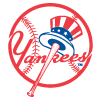 DJ LeMahieu, 1B/2B/3B, Yankees: LeMahieu's stock was understandably low heading into the year, as he was coming off a down season in which he failed to hit .300 for the first time since 2014. It was hard to envision a turnaround for a 30-year-old who was leaving Coors Field for the first time since his rookie season, especially since he didn't even have a clear starting role. Apparently we should have had more faith in the Yankees coaching staff, though, as LeMahieu wound up having a career year, hitting .327/.375/.518 with 26 homers, blowing past his career-high 15. The return of Miguel Andujar from his shoulder surgery may complicate the infield picture next season, but LeMahieu should still have something close to an everyday role if he can sustain anything close to this level of performance.
DJ LeMahieu, 1B/2B/3B, Yankees: LeMahieu's stock was understandably low heading into the year, as he was coming off a down season in which he failed to hit .300 for the first time since 2014. It was hard to envision a turnaround for a 30-year-old who was leaving Coors Field for the first time since his rookie season, especially since he didn't even have a clear starting role. Apparently we should have had more faith in the Yankees coaching staff, though, as LeMahieu wound up having a career year, hitting .327/.375/.518 with 26 homers, blowing past his career-high 15. The return of Miguel Andujar from his shoulder surgery may complicate the infield picture next season, but LeMahieu should still have something close to an everyday role if he can sustain anything close to this level of performance.
Faller: 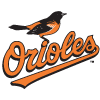 Cedric Mullins, OF, Orioles: At this point in the draft, there were understandably quite a lot of duds. Forrest Whitley's debut was hotly anticipated but never ended up happening, as he endured a pair of awful months in the minors before missing a significant portion of the season with shoulder fatigue. Tyler White never had the starting role he was projected to have and was designated for assignment in late July before missing most of the final two months with a strained trapezius. Jhoulys Chacin and Mike Zunino were each healthy for most of the year but played their way out of jobs. Mullins take the title as the biggest dud in this bracket among players who were healthy all year, however. Drafted in the 19th round as the primary center fielder in a hitter-friendly park, Mullins went 6-for-64 at the plate before being sent down in late April and never returned, spending most of the second half of the season all the way down in Double-A.
Cedric Mullins, OF, Orioles: At this point in the draft, there were understandably quite a lot of duds. Forrest Whitley's debut was hotly anticipated but never ended up happening, as he endured a pair of awful months in the minors before missing a significant portion of the season with shoulder fatigue. Tyler White never had the starting role he was projected to have and was designated for assignment in late July before missing most of the final two months with a strained trapezius. Jhoulys Chacin and Mike Zunino were each healthy for most of the year but played their way out of jobs. Mullins take the title as the biggest dud in this bracket among players who were healthy all year, however. Drafted in the 19th round as the primary center fielder in a hitter-friendly park, Mullins went 6-for-64 at the plate before being sent down in late April and never returned, spending most of the second half of the season all the way down in Double-A.
ROUND 21-25
Riser:  Jorge Soler, OF, Royals: Soler entered the season as nothing more than a lottery ticket, as he'd yet to fully establish himself in the league after showing some early promise several seasons ago. He'd never played in more than 101 games and never hit more than 12 homers in a season. He wound up playing in all 162 contests this season and hit 48 home runs to lead the American League. He's always been supposed to have big power, so this appears to be a legitimate breakout in his age-27 season. Soler's tough home park and weak surrounding lineup holds back his value somewhat, but he'll undoubtedly be drafted far higher next season.
Jorge Soler, OF, Royals: Soler entered the season as nothing more than a lottery ticket, as he'd yet to fully establish himself in the league after showing some early promise several seasons ago. He'd never played in more than 101 games and never hit more than 12 homers in a season. He wound up playing in all 162 contests this season and hit 48 home runs to lead the American League. He's always been supposed to have big power, so this appears to be a legitimate breakout in his age-27 season. Soler's tough home park and weak surrounding lineup holds back his value somewhat, but he'll undoubtedly be drafted far higher next season.
Faller: At this point, the draft is full of high-risk flyers, so there isn't much point in looking at which of those players turned out the absolute worst. Plus, this way I get to end the season on a positive note.
ROUND 26-30
Riser: 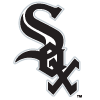 Lucas Giolito, SP, White Sox: Giolito's turnaround may be the most impressive of the season. One on hand, we should have seen it coming to at least some extent, as he was still just 24 and had been a highly rated prospect not long before. But it's hard to overstate just how bad he was in 2018. Nothing about his 6.13 ERA, 16.1 percent strikeout rate or 11.6 percent walk rate gave any reason for optimism heading into the year. He finished the season as the 13th-most valuable starting pitcher, however, posting an unrecognizable statline, striking out 32.3 percent of batters and walking 8.1 percent en route to a 3.41 ERA.
Lucas Giolito, SP, White Sox: Giolito's turnaround may be the most impressive of the season. One on hand, we should have seen it coming to at least some extent, as he was still just 24 and had been a highly rated prospect not long before. But it's hard to overstate just how bad he was in 2018. Nothing about his 6.13 ERA, 16.1 percent strikeout rate or 11.6 percent walk rate gave any reason for optimism heading into the year. He finished the season as the 13th-most valuable starting pitcher, however, posting an unrecognizable statline, striking out 32.3 percent of batters and walking 8.1 percent en route to a 3.41 ERA.
AFTER ROUND 30
Riser:  Danny Santana, 1B/2B/OF, Rangers: Santana doesn't even show up on the NFBC's ADP list. He wasn't on the Rangers' 40-man roster to start the season and hadn't given any reason to think that he'd play a meaningful role, as he hadn't posted a wRC+ above 60 or received more than 300 plate appearances in a season since 2014. He wound up getting the call in mid-April and found himself in a near-everyday role, hitting .283/.324/.534 over 511 plate appearances while starting everywhere except pitcher and catcher. He added 28 homers and 21 steals, finishing 48th in earned auction value. He may not repeat quite those numbers next season, but he should have a role as a super-utility man who does at least a little bit of everything. Honorable mentions for other undrafted players go to Liam Hendriks, Gio Urshela and Bryan Reynolds.
Danny Santana, 1B/2B/OF, Rangers: Santana doesn't even show up on the NFBC's ADP list. He wasn't on the Rangers' 40-man roster to start the season and hadn't given any reason to think that he'd play a meaningful role, as he hadn't posted a wRC+ above 60 or received more than 300 plate appearances in a season since 2014. He wound up getting the call in mid-April and found himself in a near-everyday role, hitting .283/.324/.534 over 511 plate appearances while starting everywhere except pitcher and catcher. He added 28 homers and 21 steals, finishing 48th in earned auction value. He may not repeat quite those numbers next season, but he should have a role as a super-utility man who does at least a little bit of everything. Honorable mentions for other undrafted players go to Liam Hendriks, Gio Urshela and Bryan Reynolds.

